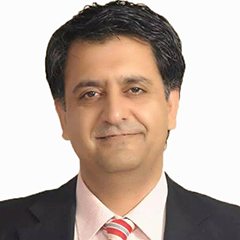The problem never was with the madaris as institutions. The problem has always been and still is, with the leadership of the madaris. Being judgmental is always the easier, but the fact remains where it remains. And the fact is that a massive majority of the madaris and their leaders from all Muslim sects preferred sticking with the social roles of their institutions, and this tradition continues. But it is also a fact that tip of this iceberg went the other way, rather sought and created the opportunities to deviate from the traditional course, basically for political and economic gains that revolved the personalities, and not the institutional. This stood, and stands true for madaris of all sects in Pakistan.
There is no denying that that the Deobandi madaris provided manpower and the social infrastructure along with creating a political narrative within the society. But this wasn’t true for all madaris. As we speak, there are 17,952 Deobandi madaris ie 52 percent of total number of madaris in Pakistan. Their present enrollment in 2017 is 2.2. million of which 1.5 million are men, and 0.7 women.
Are they all what they are commonly believed? No they aren’t. There have been and are clear divisions within the Deobandi clergy and political leadership on the role of their sects and madaris during the Afghan war, Kashmir front, and then the domestic violence of a few violent obscurantists of the likes of Mullah Sufi Muhammad, Mullah Fazlullah, Molana Abdul Aziz, Molana Abdur Rasheed Ghazi (late). Given the traditional structure of the Wafaq, their internal differences never made into the public arena.
Not many know but late Molana Salimullah Khan, who also was teacher of Molana Abdul Aziz of Lal Masjid, admonished him on his so-called Sharia-enforcement movement and asked him to retreat from his strategy and demand “that would only create trouble and destroy Pakistan.” Molana Abdul Aziz did not relent, and in turn, Molana Salimullah Khan told him at his face that “then we do not have anything to do with you and your strategies.”
A vast majority of the Deobandi leaders and their madaris kept away from the ideologies of a few, and resisted wherever was possible. This got many killed and bombed. One blame that the Deobandi leadership must shoulder nevertheless is their reluctance in siding with the people of Pakistan in their reaction toward the changed policies of the State of Pakistan. They denounced the violent actors among their ranks, but did not dare to speak in the open. As mentioned above, those who did, were killed.
There have been and are clear divisions within the Deobandi clergy and political leadership on the role of their sects and madaris during the Afghan war, Kashmir front, and then domestic violence
The same situation has prevailed with the Shia madaris. Strangely, the exact figure of their madaris is not available, but a study by Deborah Scroggins in 2012 safely estimated that upto 10 percent of the total number of madaris in Pakistan belong to the Shia community. A report in the English daily, Pakistan Today reported in 2015 that there were 35,000 madaris operating in Pakistan. This makes the figure of Shia madaris to nearly 3,500 across Pakistan with nearly half a million enrollment of students, men and women. What the non-Shia communities would see as a ‘Shia monolith’ has innumerable shades of dissent and differences. A part of their community believed in bringing about a Shia revolution in Pakistan as part of the Walaiyat that happened in Iran in the late 1970s, and organised themselves politically under a clearly understandable political name Tehrik-e-Nifaz-e-Fiqa-e-Ja’fria. Under this platform, the intention of this particularly Shia group was clear. Activists belonging to this particularly school of thought even laid siege to the administrative nerve center of Pakistan, Pak Secretariat, Islamabad, against a presidential ordinance of mandatory Zakat deduction.
As it happened, the academic side of the Shia community in Pakistan preferred keeping at distance, and emphasised that the demands must be raised, and achieved via political dialogue, and not via the public protest or paralysing the public life. Along the same lines, part of the Shia leadership in Pakistan sought spiritual, political and economic support from Iran, and succeeded in doing that too. Many among them were more Iranians than the Iranians themselves, and their noise shot a few Shia leaders to the prominence. This created a widespread judgmental lie in the Pakistani society: Shias are not loyal to Iran, and not to Pakistan. A social-political absurdity couldn’t absurd than this.
Again, a larger part of the Shia leadership must shoulder the blame, as exactly like their Deobandi counterparts, they kept silent, or did not bring their discussions in the public arena.
At least, there is some administrative similarity among the Deobandis and Shias in Pakistan when it comes to safeguarding political and economic interests.
The writer is a social entrepreneur and a student of Pakistan’s social and political challenges. Twitter: @mkw72
Published in Daily Times, November 7th 2017.
